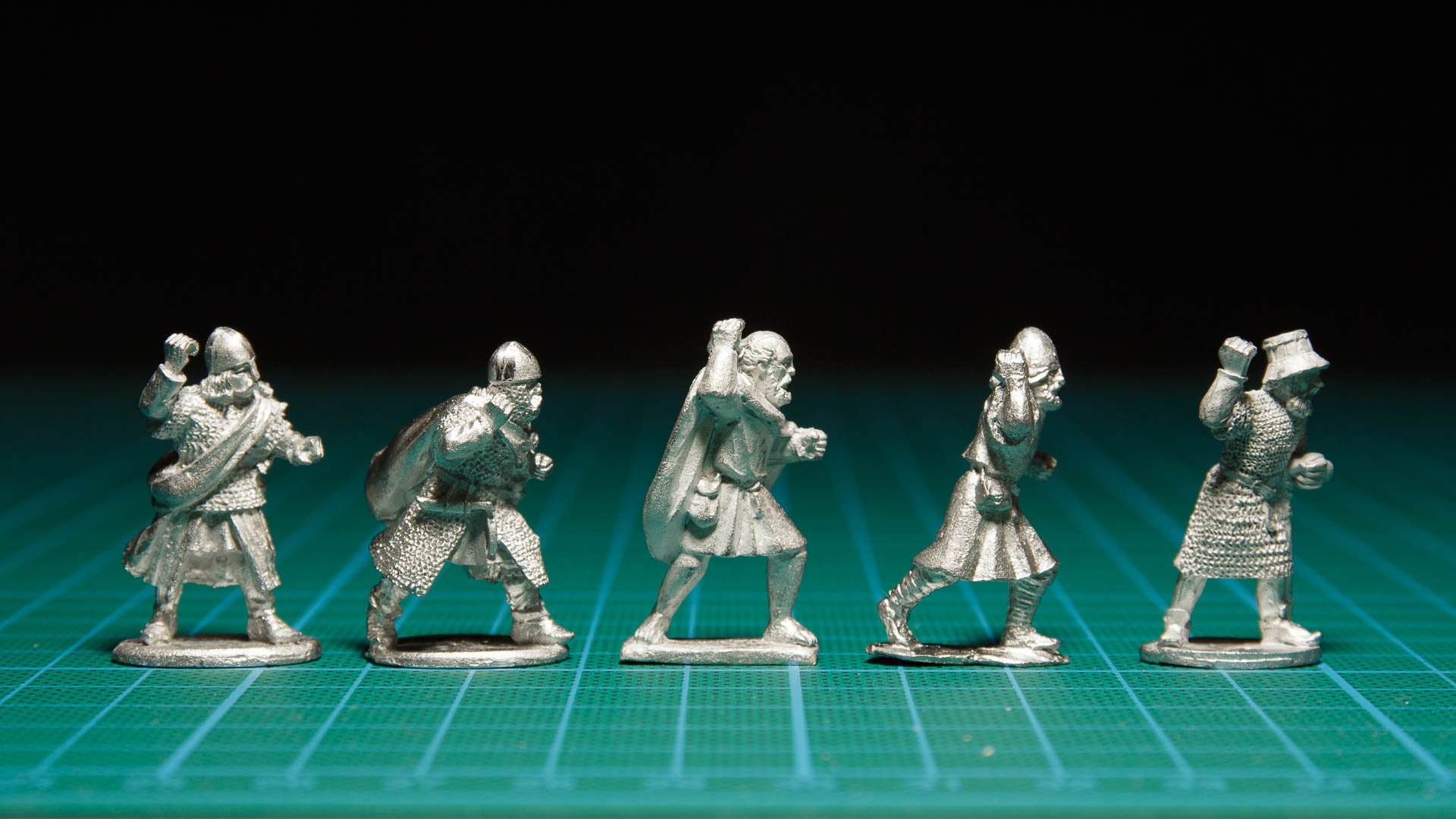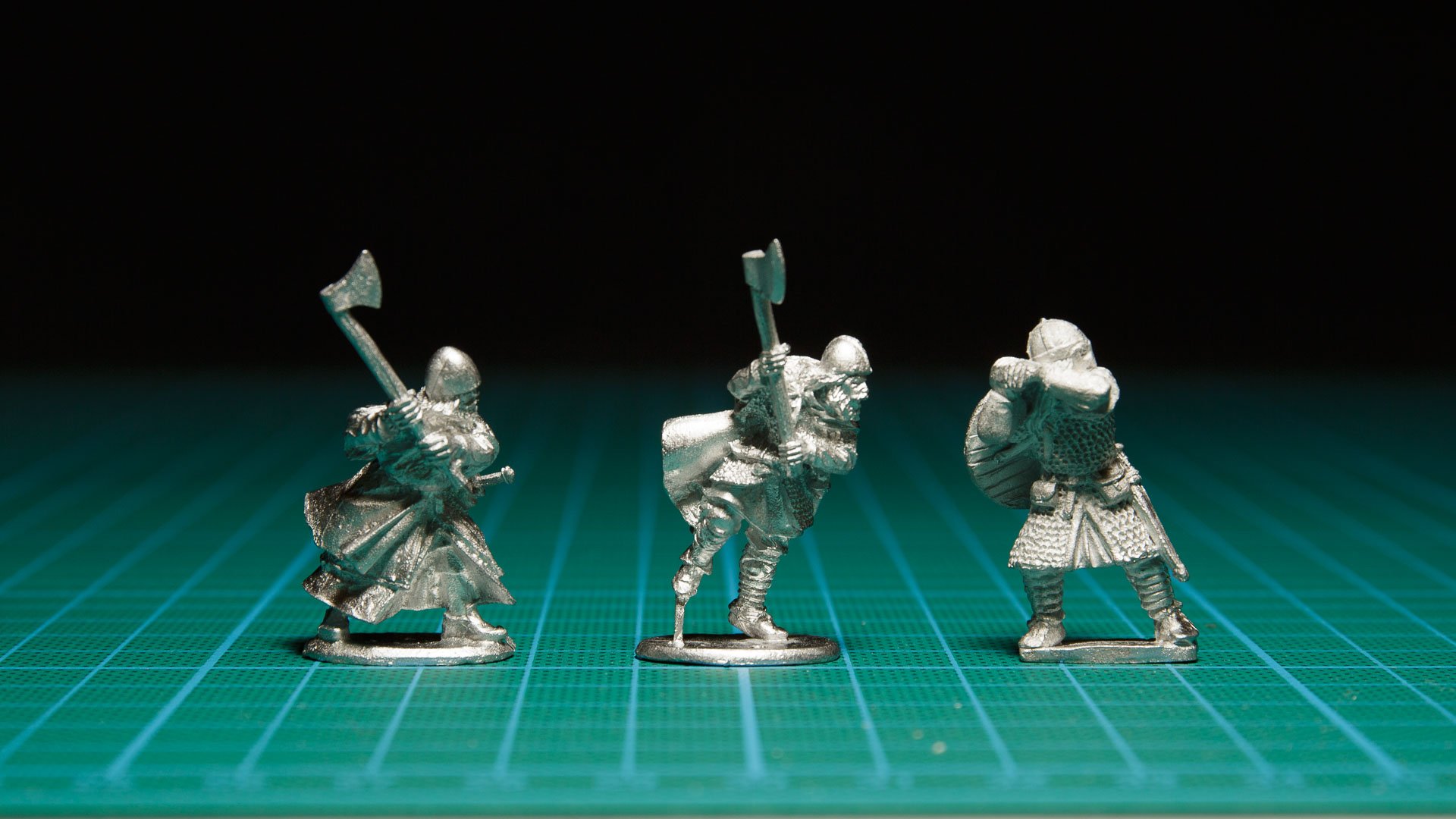Stunning range of Dark Age Welsh from Footsore Miniatures
Welsh are not the most popular Dark Age army but this range from Footsore miniatures might change that. Great animation, beautiful details, fun to paint - what more can you ask for?
Footsore Miniatures Welsh range started as a Kickstarter campaign in late summer 2021. I usually avoid Kickstarters but made an exception because of the subject, we are not spoiled with extensive ranges of medieval Welsh. But also because Matthew Bickley was going to sculpt the range. He has a very distinct style and his miniatures are always very animated, I mean, just look at these:
A strandhogg gone wrong as pagan raiders from Dublin are ambushed by local forces. Anglesey, Kingdom of Gwynedd, 863 AD. Viking casualties by Ragnarok Miniatures and Wargames Foundry.
Who else sculpts like this!?
I’ve said before that I prefer miniatures just standing when making units, and I still do, we’ll get around to some of the problems Matthew Bickley’s sculpts pose when basing a unit further on.
The Kickstarter was divided into two parts, one for the Dark Ages (or early medieval) and one for the Barons War (or high medieval). This review only deals with the miniatures intended for the Dark Ages and not the medieval ones.
Scope of the range
These are clearly labeled as ”Dark Age” or ”Early Medieval” so around 500 AD to the Battle of Hastings in 1066. Unfortunately there is not a lot of information about Welsh warriors during this time. There are no plates of the Welsh in WRG’s ”The Armies and Enemies of Imperial Rome 150 BC to 600 AD” or ” Armies of the Dark Ages 600-1066” which are my usual starting point for research. There are three plates of Welshmen in Ian Heath's ”Armies of Feudal Europe 1066-1300” though. Two of these are based on drawings in an English text from the 1280’s and one from the sigil of Llywelyn ab Iorwerth who died in 1240. These are complemented with various text sources. All of these sources are 200 years too late for our intended period.
The sigil of Llywelyn ab Iorwerth and a Welsh archer from “Liber A”, note the single shoe. Source: Wikimedia Commons.
That’s obviously not a great start for historical miniatures but Mark Farr who runs Footsore was open about this in the Kickstarter:
”[We] were helped and hindered by the scarcity of information available on Welsh warriors, with a lot of historical (mis)information coming from their enemies. Realising that a constant theme was that comparatively, the Welsh were more impoverished than their opponents. It gave us a basis for our figures, leggings, tunics, plaid and cloaks.”
That’s a fairly good excuse I guess, we are wargamers and not historians after all.
There are some parts of the miniatures worth commenting on though. First up are the gambeson on some of the better equipped warriors. I thought the gambeson (or the aketon, which is supposedly named after the arabic word for cotton) became popular in western europe after the first crusades, which would again place us outside the intended period. But according to Ian Heath in his ”Armies of the Dark Ages” padded or quilted protection like the gambeson was in widespread use among the vikings during this period. When free men were called up for military service in Sweden and Denmark the wealthier men were obliged to wear a quilted jerkin or mail corselet. In a similar way Henry II’s ”Assize of Arms” from 1181 stipulates that the poorer men should wear a gambeson. So it seems plausible to me that the wealthier warriors in Wales would wear quilted armour, gambesons, aketons or whatever you want to call it.
Secondly, some of the helmets which have cheek guards seem a bit off to me. There are plenty of examples of this but these are all from slightly before our period, it is more reminiscent of sub-roman, Saxon or Vendel helmet styles. There is also a slightly later example as one of the Lewis chess pieces wear earguards. The Welsh reenacent group Cwmwd Ial Reenactment have some photos on their Facebook page with warriors wearing this kind of helmet. I tried to reach out to them and ask where this comes from but unfortunately they never got back to me.
Welsh warriors by the reenactment group Cwmwd Ial. A lot of them wear these types of helmets, as does the Footsore Welsh. Source: Cwmwd Ial Reenactment
Anyway, I think it’s a weird choice and would have preferred if they just wore nasal helmets or something similar.
The Sculpting
As mentioned above these miniatures are sculpted by Matthew Bickley and he is very good at what he does. One of the hallmarks of his style is the very animated poses, almost exaggerated, and this range is his magnum opus. From throwing javelins to jumping over stones to swinging dane axes, every miniature is full of animation to a degree that I haven’t seen in miniatures before. The details, like pouches, buckles, swords and knives, are sharp and on some of the miniatures there’s quite a lot of them.
Most importantly these miniatures feel and look very Welsh, at least to me. On the tabletop these will not be mistaken for vikings, saxons, irish or scots. It’s a testament to the skill of Matthew Bickley that he manages to make miniatures that aren’t just generic ”Dark Age-warriors” but instead something unique and distinctively different.
Even this range has its shortcomings though and it’s a common complaint from me - the horses. To be fair I only have a single mounted model, a commander, but like many other ranges it seems like the rider was sculpted without ever seeing the horse and the horse is just not very good.
Here are some comparison pictures with other popular Dark Age-ranges.



Working with the miniatures
Cleaning up the miniatures was easy enough, the amount of flash and mold lines were nothing out of the ordinary for metal miniatures. One exception was that a few bases were miscast and a lot thicker than they should, no damage on the miniature itself though.
Most of the miniatures are covered in flowing fabrics which I find both easy and fun to paint. The exaggerated animation in the miniatures creates great contrast in the painting, there is no need to help define areas with paint, washes and the sculpting really does the work for you.
I’ve praised the animation of these sculpts this far but there is also a problem with this - basing. I usually base my miniatures in fours on 40mm squares and that’s a challenge with these. Fitting four of them to a base is hard enough but there will always be arms, weapons and capes poking out that will interfere with the miniatures on the base next to it. This isn’t criticism of the miniatures, more of a warning, basing will be hard, at least if you multi-base like me.
Price
At the time of writing four infantry or two cavalry miniatures cost £9 which is £2,25 for a single infantry miniature or £4,5 for a single cavalry miniature. Single characters or heroes cost £4 each. Since there aren't a lot of Welsh miniatures around I had to compare this to other Dark Age-miniatures, i.e. vikings, saxons and normans. For infantry this is the most expensive metal 28mm Dark Age miniature I could find with Warlord Games in second place with £2,1 per miniature. For cavalry only Wargames Foundry was more expensive at £5 per miniature, and again Warlord Games in third place with £4,25 per cavalry miniature.
Obviously you always want to pay less but in this case I think the higher price is somewhat warranted. These are brand new sculpts by one of the most talented sculptors around and they look great. They also fill a gap in the market and are a niche within Dark Age miniatures.
Raiders from the Kingdom of Powys attack into the neighboring Kingdom of Mercia. The Welsh border, 794 AD.
Conclusions
These are amazing sculpts that bring something new to a fairly crowded part of the miniatures market. Footsore has created some very unique and distinctly Welsh miniatures here which is impressive. Especially considering the sparse sources available.
The high price is obviously a bummer but if you believe that you pay for what you get it’s more understandable, these are simply just some of the best Dark Age miniatures around.


Here’s how I made this diorama of two dueling samurais inside a glass jar for my fathers birthday.